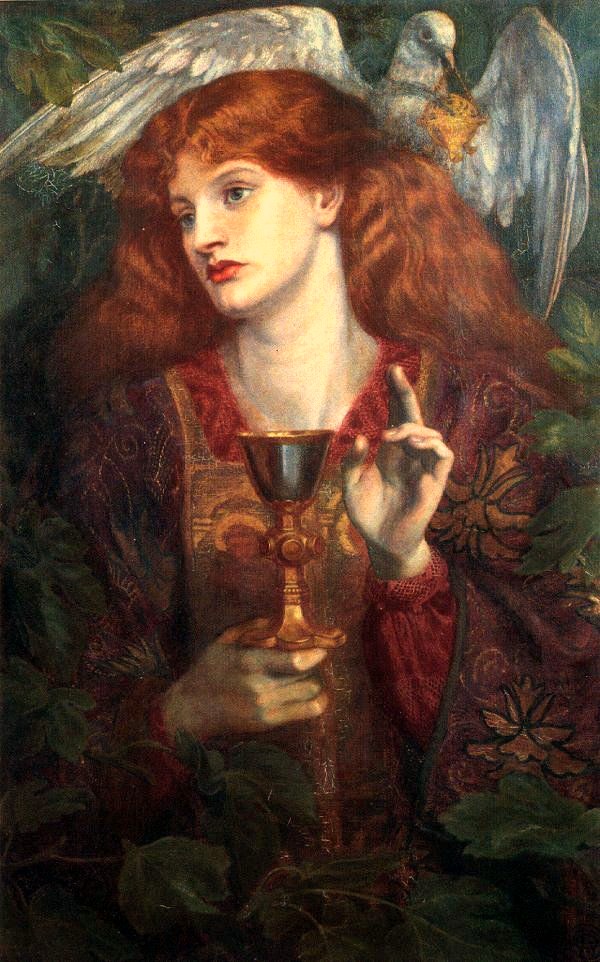LYRICS
Seeking
Searching
Pursuing
The eluding
Quest for a transformation
A global solution
Less greed and grime
More love in time
Spiritual enlightenment
Is the journey’s ascent
May our cup runneth over
In wisdom, we uncover
The quest for the Holy Grail
Our best shall prevail
The quest for the Holy Grail
Our souls we’ll/will unveil
- The-Holy-Grail-Part-I.mp3
- The-Holy-Grail-pipe-organ.MID
- The-Holy-Grail-Part-II.mp3
- The-Holy-Grail-Part-II-Instrumental.mp3
- The-Holy-Grail-LH-Casio-WK-3500.MID (Left Hand / also controlled Korg PS60)
- The-Holy-Grail-RH-Yamaha-PSR-740.MID (Right Hand / also controlled microKorg and miniNOVA vocorder)
Chords: Em D6 / Em F / F Bb F / C7 F / C F C7 / C7 Am Eaug C / C F Bb / C Edim / F; Part II Hard Rock / Digi-Rock @ 120 Beats Per Minute
Instrumentation: Vocals (TC-Helicon VOICELIVE and MiniNova Vocorder), Fender Jazz Bass (Boss Digital Delay), Keyboards (Korg PS60, Casio WK-3500, Yamaha PSR-740, MiniNova, MicroKorg)
ABOUT THE HOLY GRAIL
In the King Arthur legend, the quest for the Holy Grail centers around the prophecy that a knight will eventually fill a vacant seat at the Round Table by seeking and finding this sacred object. The quest begins when a stone with an embedded sword is discovered, and only Sir Galahad, son of Sir Lancelot, proves capable of drawing the sword and joining the Round Table. The Holy Grail, associated with the cup used by Jesus at the Last Supper, symbolizes a mystical union with God in the legends. The origin of the Grail legend is uncertain, but it appeared in literature from the 12th to the 15th century.
The earliest known work on the Holy Grail is “Le Conte du Graal” (The Story of the Grail or the Tale of Perceval) by Chrétien de Troyes in the 12th century, merging the religious quest for the Grail with knightly adventures. Perceval, a knight of innocence, encounters the wounded Fisher King and sees the Grail but refrains from asking about it, leading to the king’s continued suffering. Later versions replace Perceval with Sir Gawain. In Wolfram von Eschenbach’s 13th-century version, the Grail is a precious stone fallen from heaven, differing from the cup depiction and inspiring Richard Wagner’s opera “Parsifal.”
The medieval legend of King Arthur’s quest for the Holy Grail is rooted in the spiritual journey of the knights. The Grail is perceived as a sacred and magical object with healing powers, and those who find it are believed to gain great power and wisdom. In Dan Brown’s novel “The DaVinci Code,” the Holy Grail takes on a different meaning, representing a secret bloodline—Jesus Christ and Mary Magdalene’s alleged descendants. The novel suggests that the Priory of Sion has protected this secret, and protagonist Robert Langdon becomes embroiled in a race to unveil it. The contrast between the spiritual quest in Arthurian legend and the conspiracy theory in Dan Brown’s novel highlights the varied interpretations and adaptations of the Holy Grail myth across different narratives.
THE HOLY GRAIL METAPHOR
The Holy Grail, as a metaphor for climate change, could represent the quest for a transformative solution or understanding to address the environmental challenges facing the world. In the Arthurian legend, the Holy Grail is a symbol of spiritual enlightenment and healing, and its quest is seen as a journey of self-discovery and redemption for the knights. Similarly, the metaphorical Holy Grail of climate change might embody the search for sustainable practices, innovative technologies, and a collective commitment to heal and restore the planet.
The quest for the Holy Grail requires overcoming obstacles, proving one’s worthiness, and demonstrating virtues such as courage and selflessness. In the context of climate change, this could parallel the challenges humanity faces in transitioning to cleaner energy sources, reducing carbon emissions, and adopting environmentally conscious practices. The metaphor underscores the urgency of finding solutions, the need for cooperation on a global scale, and the potential for positive transformation if the quest is undertaken with dedication and a sense of responsibility.
Just as the knights embark on a spiritual and ethical journey in pursuit of the Holy Grail, addressing climate change requires a moral and ethical commitment to protecting the environment and ensuring a sustainable future. The metaphor emphasizes that, like the knights in the legend, individuals and societies must rise to the occasion, overcome obstacles, and work collectively to find the metaphorical Holy Grail for climate change—a sustainable and harmonious relationship with the planet.
From the album: Camelot’s Resurgence
A song about The Human Induced Climate Change Experiment
